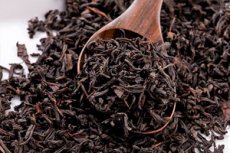New publications
Caries in the crosshairs: Natural polyphenols disrupt the mechanism of bacterial attachment
Last reviewed: 09.08.2025

All iLive content is medically reviewed or fact checked to ensure as much factual accuracy as possible.
We have strict sourcing guidelines and only link to reputable media sites, academic research institutions and, whenever possible, medically peer reviewed studies. Note that the numbers in parentheses ([1], [2], etc.) are clickable links to these studies.
If you feel that any of our content is inaccurate, out-of-date, or otherwise questionable, please select it and press Ctrl + Enter.

Caries usually starts with Streptococcus mutans firmly adhering to enamel and building a biofilm (dental plaque), secreting acids that eat away at the tooth. The key to attachment in many Gram-positive bacteria is the enzyme sortase A (SrtA): it “sews” adhesin proteins into the cell wall (LPXTG motif), turning them into real anchors. A team from the University of Wyoming reported that natural polyphenols from maple inhibit S. mutans SrtA and significantly reduce plaque formation, with (−)-epicatechin gallate (ECG), also well known from green/black tea, being the strongest inhibitor. This opens the way to safer mouthwashes and other hygiene products, especially for children, where alcohol and harsh antiseptics are undesirable. The study is published in the journal Microbiology Spectrum.
Research methods
The authors went “from calculations to an applied model of a tooth”:
- In silico molecular modeling showed that maple polyphenols bind to the active site of S. mutans SrtA.
- In vitro (enzyme) - purified SrtA was tested in vitro and confirmed to be inhibited by a number of maple compounds.
- In vitro (biofilm) — tested whether these compounds inhibit the attachment and growth of S. mutans biofilms on "plastic teeth" and on hydroxyapatite discs (enamel model). Compared the effectiveness of individual polyphenols, including ECG and the popular EGCG. This pathway (docking → enzyme → "enamel" surface) allows us to link a molecular target with a real anti-biofilm effect.
Key Results
- Mechanism: Maple polyphenols inhibit SrtA, which makes it harder for adhesins to “sew” into the cell wall—bacteria cling less well to the tooth surface and build a weaker biofilm.
- Effect on enamel models: On hydroxyapatite discs and “plastic teeth”, such compounds significantly reduced S. mutans biofilm compared to controls.
- Composition and comparison: ECG was the most potent inhibitor; EGCG (often used in dental products) also worked, but significantly less so – suggesting that EGCG’s previous “modest” effects may have been due to a suboptimal choice of molecule.
- Safety and Availability: ECG is a food polyphenol that is relatively readily available and inexpensive, making it a candidate for inclusion in mouthwashes and toothpastes as an anti-biofilm additive rather than a “bacteria killer.”
Interpretation and clinical conclusions
The work reinforces the shift from a "kill everything" strategy to a "stripping bacteria of their anchors" strategy. In practice, this means:
- in caries prevention, edible polyphenols could be tested as adjuvants to fluoride and mechanical cleaning, with an emphasis on reducing adhesion/plaque;
- children and sensitive groups will have a window for non-toxic mouthwashes (important because children often swallow mouthwash);
- Skin care developers should consider ECG as a more potent alternative to EGCG.
Limitations: shown in silico/in vitro; no data on clinical efficacy, formula stability, and impact on normal oral microbiota — all of this will require preclinical and randomized trials. However, the consistency of “target → enzyme → biofilm on enamel” makes the case for further development compelling.
Authors' comments
- Why maple and what triggered the project? The team noticed that Listeria hardly formed biofilm on some wood species, especially maple, which led to the idea of maple polyphenols and their target, the enzyme sortase A. They then transferred this idea to the mechanism-related S. mutans.
- Key insights into mechanism and novelty: According to Mark Gomelsky, PhD (University of Wyoming), maple polyphenols “inhibit sortase in S. mutans, making the bacteria less likely to attach to the tooth surface,” which has an anti-biofilm effect rather than a “killer” effect.
- On the "too smooth" fit: " In some ways, this study was almost too easy... everything worked out as we predicted," Gomelsky says, calling it a rare experience in a 35-year career.
- ECG versus EGCG. The strongest inhibitor was (−)-epicatechin gallate (ECG); EGCG also works, but much weaker. Hence the authors’ conclusion: the “moderate” effects of EGCG agents could be a consequence of the choice of a less optimal compound.
- Practical perspective and safety. The authors see ECG and other edible polyphenols as additives to oral care products (rinses, pastes): natural, affordable, non-toxic - especially relevant for children who may swallow the rinse.
- What's next: The team is already developing plant polyphenol-based products through a university startup; the paper's first author is Ahmed Elbakush, PhD.
According to the study’s leader, Mark Gomelsky (Univ. of Wyoming), “It was almost too neat: the predictions were confirmed in the enzyme and in the tooth model.” He emphasizes that ECG and other edible anti-SrtA polyphenols could potentially be added to hygiene products to prevent cavities, especially in pediatric lines. The team is already developing such products through a university-affiliated startup; the paper’s first author is Ahmed Elbakush, PhD.
